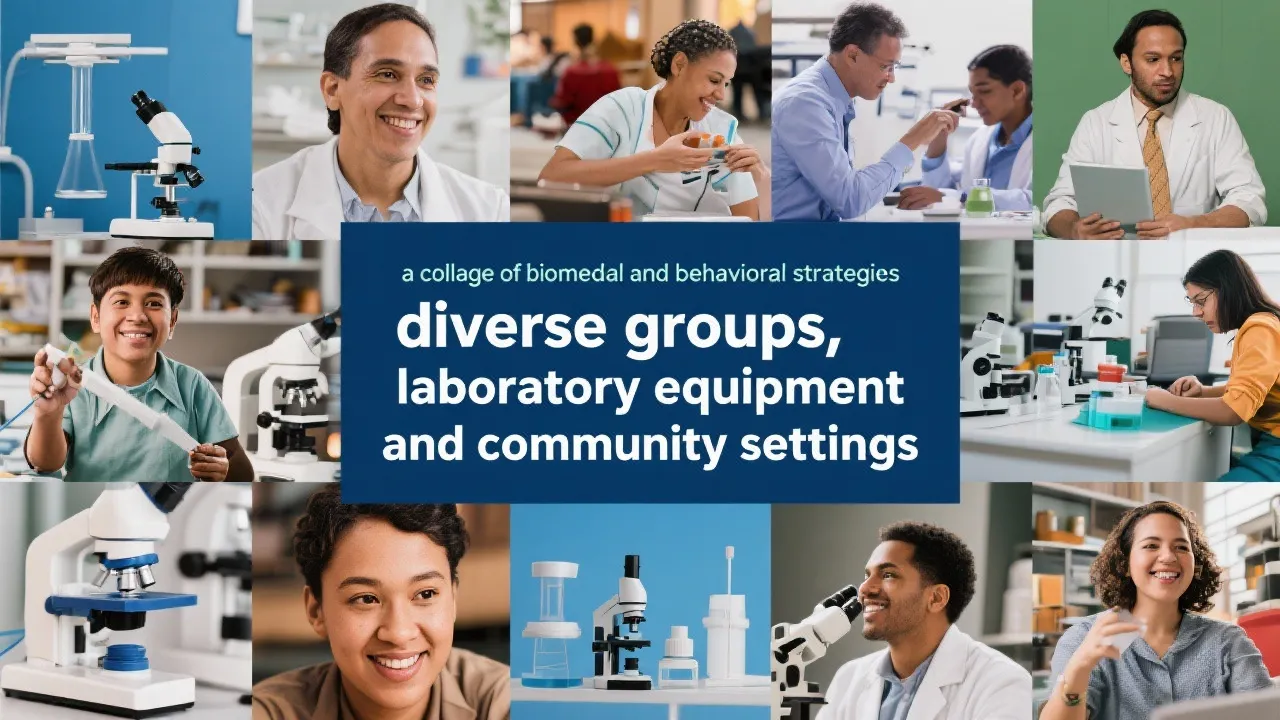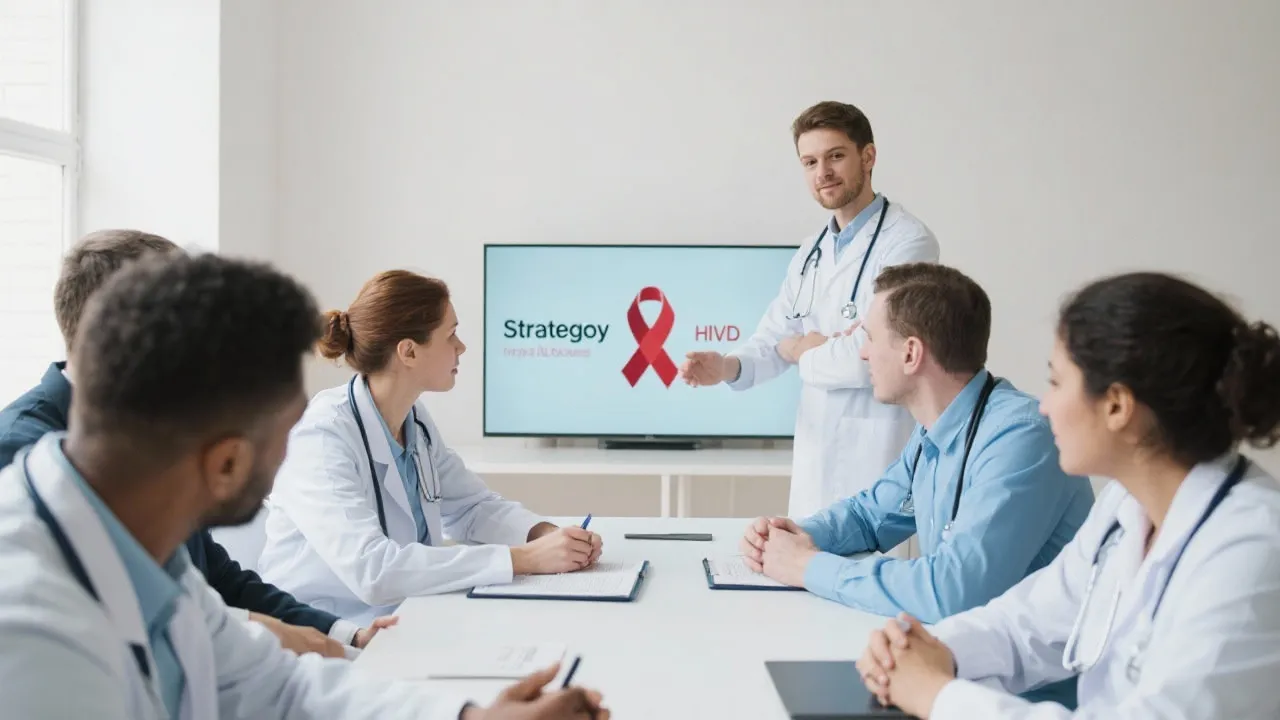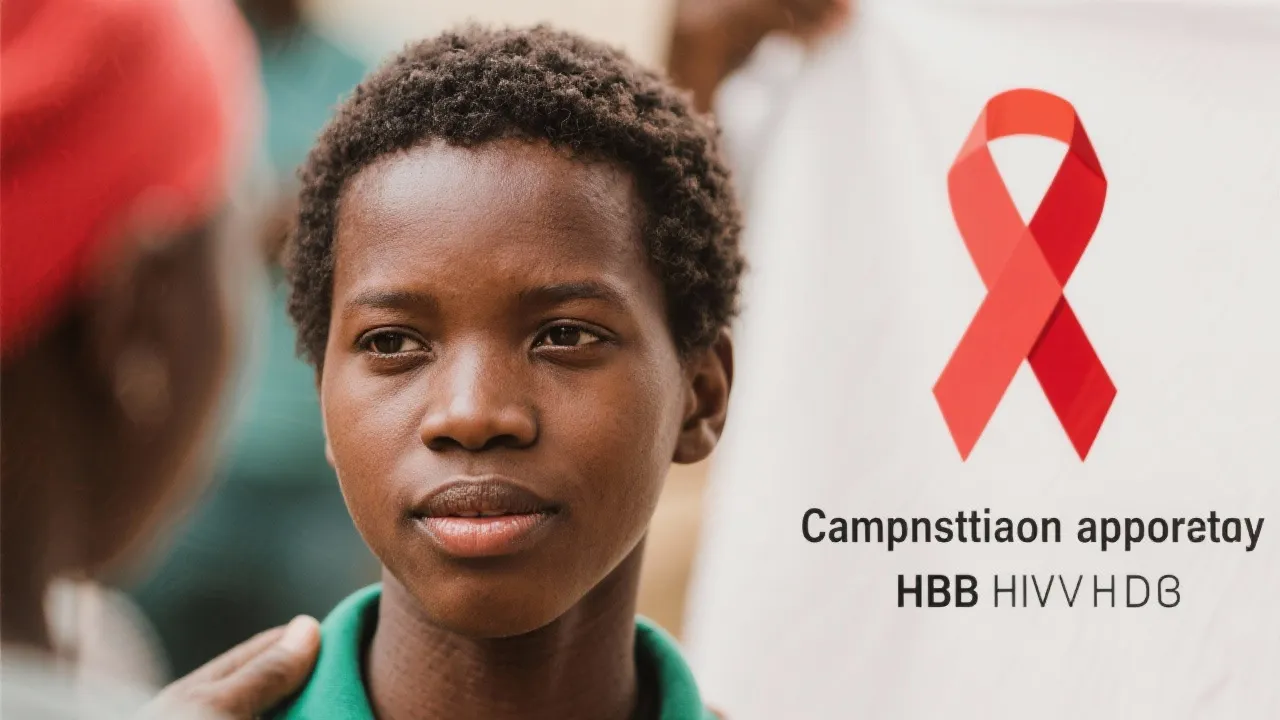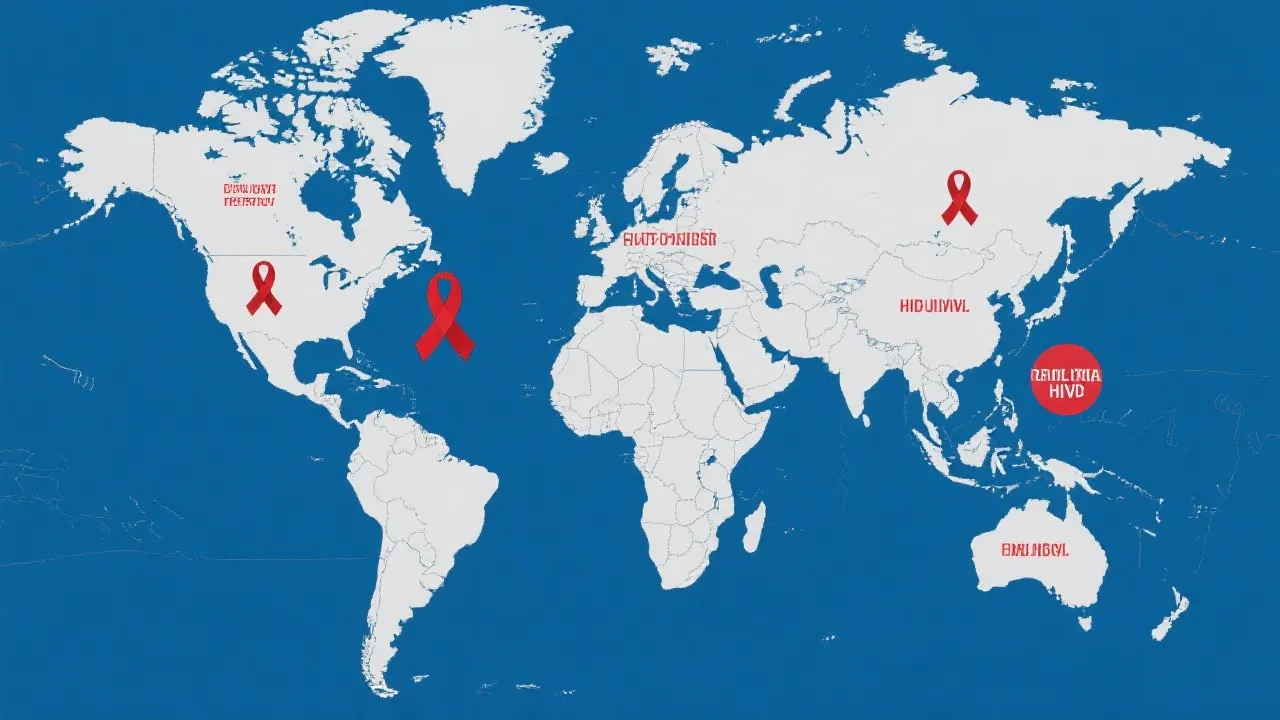Innovative Strategies for HIV Prevention
This guide examines behavioral and biomedical combination strategies for HIV prevention, highlighting their importance in the ongoing fight against the virus. Behavioral strategies focus on altering practices and reducing risk factors associated with HIV transmission, while biomedical approaches leverage scientific advancements to prevent infection. By integrating these methods, a comprehensive prevention framework is achieved.

Introduction to HIV Prevention
Human Immunodeficiency Virus (HIV) continues to be a major public health challenge worldwide. Despite significant advancements in treatment, prevention remains a crucial component in curtailing the spread of the virus. The global community has made substantial progress in managing the epidemic through various strategies, but the battle is far from over. In recent years, a growing emphasis has been placed on the synergy between behavioral and biomedical combination strategies for HIV prevention. These strategies bring together different approaches to create a comprehensive prevention framework, effectively reducing new infections and controlling the spread of HIV.
Although HIV-related stigma and discrimination persist in many communities, public awareness around these issues is increasing, facilitating dialogue and normalization of HIV discussions. Education, advocacy, and community mobilization play pivotal roles in HIV prevention efforts. The importance of addressing the social determinants of health is recognized as essential to devising effective prevention strategies. This approach ensures that interventions are culturally appropriate and community-specific, which is crucial for success.
Understanding HIV Transmission
To formulate effective prevention strategies, it is essential to understand how HIV is transmitted. HIV is primarily spread through the exchange of bodily fluids, including blood, semen, vaginal fluids, rectal fluids, and breast milk. The main routes of transmission include:
- Sexual Transmission: Unprotected sexual intercourse with an HIV-positive person remains one of the leading causes of HIV transmission. This includes vaginal, anal, and, less frequently, oral sex, emphasizing the importance of safe sex practices.
- Needle Sharing: The sharing of needles and syringes among people who inject drugs is another significant route of transmission.
- Mother-to-Child Transmission: An HIV-positive mother can transmit the virus to her child during pregnancy, childbirth, or breastfeeding.
- Blood Transfusions: Although rare due to rigorous testing, HIV can still be transmitted through infected blood products.
Understanding these routes of infection is fundamental when discussing prevention strategies. Different populations may be at higher risk for certain types of transmission, such as men who have sex with men (MSM), individuals with multiple sexual partners, and intravenous drug users. Tailoring prevention interventions based on demographic and behavioral characteristics can significantly reduce the incidence of new HIV infections.
Behavioral Strategies
Behavioral strategies for HIV prevention focus on modifying practices and reducing risk factors associated with HIV transmission. Behavioral change is at the heart of effective HIV prevention efforts. This approach encompasses education and awareness campaigns, promoting safer sex practices like condom usage, regular testing, and harm reduction programs for drug users. Education campaigns are instrumental in changing perceptions and behaviors around HIV risk, particularly among vulnerable groups.
| Behavioral Strategy | Focus |
|---|---|
| Safe Sex Education | Promoting condom use and understanding correct application techniques. |
| Needle Exchange Programs | Reducing the risk of HIV transmission among drug users by offering sterile needles. |
| HIV Testing and Counseling | Encouraging regular testing and offering psychological support to increase awareness and acceptance. |
| Community Engagement | Involving communities in prevention initiatives allows for tailoring messages and programs to specific populations. |
| Targeted Outreach | Focusing efforts on populations at high risk for HIV, particularly in areas with high incidence rates. |
Behavioral approaches are vital in addressing the roots of transmission. They foster community engagement, create a supportive environment conducive to healthy practices, and empower individuals to make informed choices regarding their health. Including diverse voices in the discussion and implementation of these strategies ensures that all segments of the population feel valued and heard, ultimately leading to enhanced efficacy.
Biomedical Strategies
Biomedical strategies have witnessed remarkable advancements thanks to scientific innovation. These methods typically involve medical interventions to prevent HIV infection, including Pre-Exposure Prophylaxis (PrEP) and Post-Exposure Prophylaxis (PEP). These interventions have transformed the landscape of prevention, adding a critical layer of protection against HIV transmission.
- Pre-Exposure Prophylaxis (PrEP): A daily pill that, when taken consistently, significantly reduces the risk of HIV infection in high-risk individuals, such as MSM, partners of HIV-positive individuals, and intravenous drug users. Clinical studies have shown that PrEP can lower the risk of getting HIV by up to 99% when taken as prescribed.
- Post-Exposure Prophylaxis (PEP): A treatment administered immediately after potential exposure to HIV, ideally within 72 hours. PEP involves taking antiretroviral medications for a month and is crucial for anyone who believes they may have been exposed to the virus.
- Antiretroviral Therapy (ART): Continuous treatment for those living with HIV that helps maintain viral suppression. By achieving and sustaining an undetectable viral load, individuals cannot transmit the virus to their sexual partners, highlighting the concept of "Undetectable = Untransmittable" (U=U).
- Vaccine Research: Ongoing research aims to develop effective vaccines as potential solutions for HIV prevention. While multiple vaccine trials have shown promise, a safe and effective vaccine that can provide long-term immunity remains an unmet need. Researchers continue to explore novel approaches to vaccine development, including the use of mRNA technology and viral vector platforms.
These biomedical interventions are pivotal, offering proactive measures to complement and enhance the effectiveness of behavioral strategies. They also empower individuals at risk to take control of their health, encouraging a culture of prevention. Increased access to these interventions, coupled with strong health systems, can make significant strides in reducing HIV transmission rates globally.
Integrating Strategies: A Comprehensive Approach
When implemented together, behavioral and biomedical combination strategies for HIV prevention offer a robust defense against the spread of HIV. This integration is crucial as it addresses various aspects of the epidemic, catering to diverse populations and needs. The combination of these strategies is often tailored to specific communities, considering the localized context and prevalent risk factors.
For example, a successful program in a high-prevalence area might combine community education campaigns about safe sex practices with the distribution of free condoms and easy access to PrEP and PEP medications at local healthcare facilities. By utilizing multiple strategies, the programs can address both knowledge gaps and practical barriers to accessing services.
Moreover, integrating behavioral and biomedical strategies facilitates a comprehensive understanding of HIV prevention, moving beyond episodic interventions to creating sustainable health systems that encourage ongoing engagement with healthcare providers. Involving healthcare professionals, community leaders, and affected individuals in co-designing interventions enhances buy-in and uptake of prevention measures.
Case Studies: Successes and Challenges
Several regions have adopted integrated strategies with varying degrees of success. For instance, combination approaches in certain African countries have significantly reduced infection rates, while other areas encounter challenges such as accessibility to interventions, sociocultural barriers, and political resistance. Conducting thorough community assessments, understanding local health landscapes, and leveraging existing resources have proven effective in promoting successful implementation.
In countries like Botswana and Zambia, collaborative efforts between government agencies, NGOs, and community-based organizations have led to substantial declines in new HIV infections. These nations have integrated both biomedical and behavioral interventions seamlessly, emphasizing awareness campaigns alongside PrEP distribution and routine testing initiatives.
However, challenges remain. In some regions, stigma surrounding HIV continues to deter individuals from seeking testing and treatment. Socioeconomic barriers, such as poverty and lack of transportation, hinder access to healthcare facilities, while misinformation about HIV persists, complicating educational efforts. Addressing these barriers requires collaboration across sectors to ensure holistic solutions that are inclusive, sustainable, and culturally sensitive.
Future Directions in HIV Prevention
The landscape of HIV prevention is continually evolving, driven by advances in medicine, technology, and public health methodologies. Future directions include a stronger focus on equity and inclusivity in prevention efforts, ensuring that marginalized and underserved populations receive adequate resources and support.
Emerging technologies, such as telehealth and digital health services, offer new avenues for delivering education, counseling, and medical care for HIV prevention. Leveraging mobile health applications for reminders about medication adherence, sexual health resources, and local testing sites could enhance accessibility and confidentiality. Additionally, youth engagement through social media platforms can facilitate awareness and promote safe practices among younger audiences.
Investment in research and development remains critical, particularly in the pursuit of an effective HIV vaccine. Collaborative partnerships between governments, the private sector, and international organizations can accelerate the development of innovative therapies and responsive public health policies. Expanding access to treatment and preventive measures will not only benefit people living with or at risk for HIV but will also contribute to the overall discourse on global health and human rights.
Conclusion
In the ongoing battle against HIV, a holistic approach that combines behavioral and biomedical strategies is indispensable. By integrating diverse methods and ensuring community engagement and advocacy, the potential for reducing HIV transmission rates is significantly enhanced. The importance of dismantling barriers, including stigma, discrimination, and socioeconomic challenges, cannot be overstated. Continued investment in education, outreach, and healthcare infrastructure is essential to foster environments where individuals feel empowered to take charge of their health.
As we envision the future of HIV prevention, a steadfast commitment to inclusivity, innovation, and comprehensive care will pave the way towards reducing and ultimately eliminating new HIV infections globally. It is crucial for all stakeholders, from governments to grassroots organizations, to collaborate in creating long-lasting solutions that ensure everyone, regardless of their background, has access to the resources necessary to protect themselves and their communities.
FAQs
- What are behavioral strategies in HIV prevention? Behavioral strategies involve methods like safe sex education, needle exchange programs, and HIV testing to reduce risky behaviors and increase awareness.
- How does PrEP help in preventing HIV? PrEP is a preventive medication for high-risk populations, which lowers the chance of infection when taken consistently. Studies have demonstrated its efficacy in preventing HIV among various demographics.
- Why is an integrated approach important for HIV prevention? Integrated approaches combine different strategies to provide comprehensive protection, improving effectiveness and addressing various facets of HIV transmission, ensuring vulnerable populations receive adequate resources.
- What are the future prospects for HIV prevention? Continued research and innovation are likely to yield new interventions like vaccines, enhancing the toolbox available for HIV prevention. Additionally, leveraging technology can improve access and engagement with prevention services.
By consolidating efforts and resources, building strong coalitions around shared goals, and remaining adaptive to emerging challenges, we can foster a future where HIV is no longer a public health challenge but a manageable condition, much like other chronic diseases. The road ahead may be complex, but with collective action, dedication, and a firm commitment to health equity, it is a path that can lead to success.





